
After Fujifilm’s FP prompt pack movie was discontinued again in 2016, the remaining larger-format prompt movie selections have been few: Not possible Venture integral movie, which took half-hour to develop with unpredictable outcomes, or Fuji Instax broad movie. Positive, you may nonetheless purchase expired pack movie, or spring for One On the spot, however at over $20/photograph, it makes taking footage a bit of extra nerve-wracking and rather less enjoyable.
The brand new Polaroid i-type movie is a lot better than earlier variations, so I made my Polaroid “SX-450” camera. However with horizontally-reversed sq. formatted photos, and movie that’s round $2.50/photograph, I used to be left wanting on the Instax broad choice and with a historical past of digicam modding, nicely…
…permit me to introduce you to the Pola Instax 455:
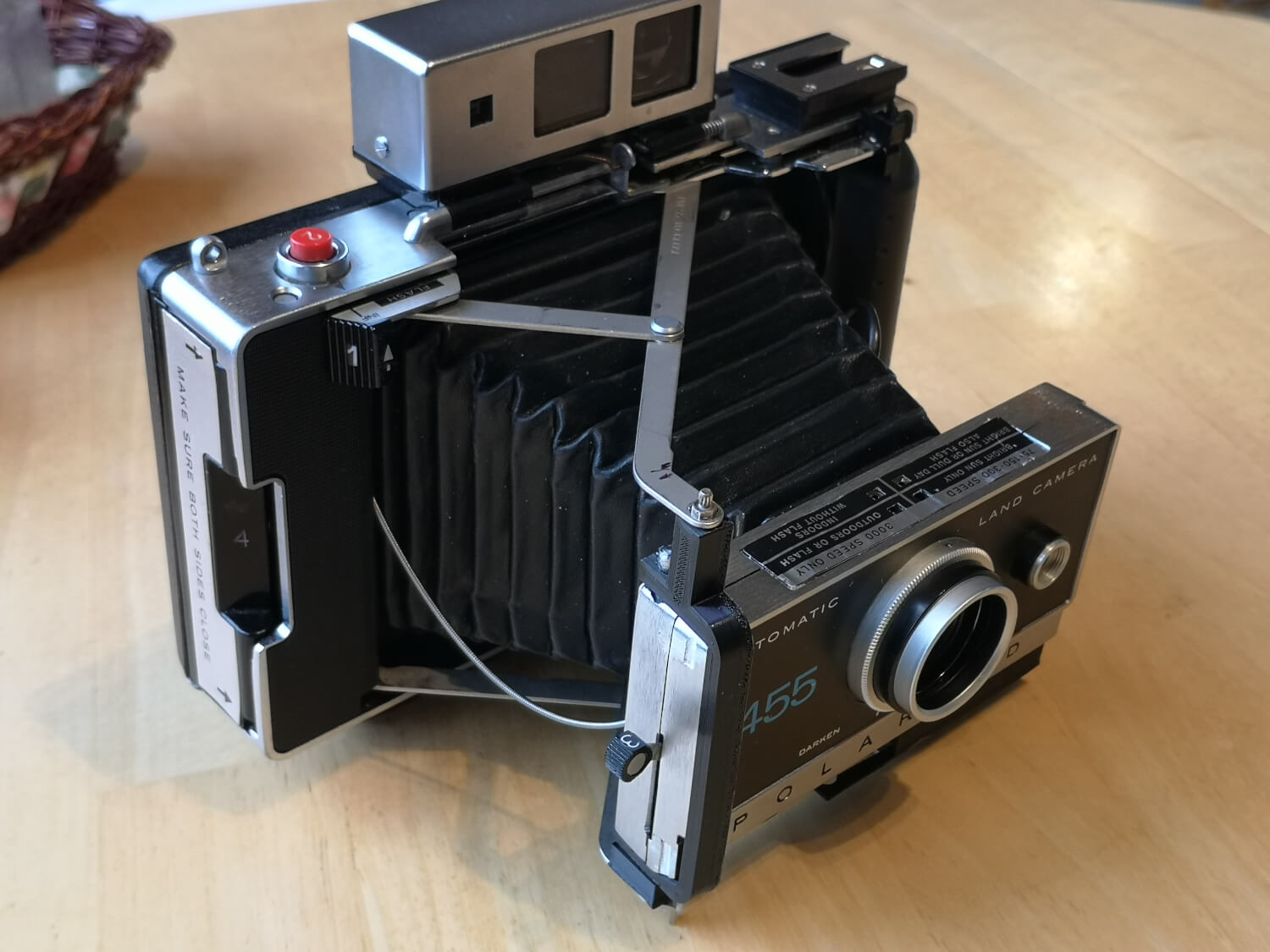
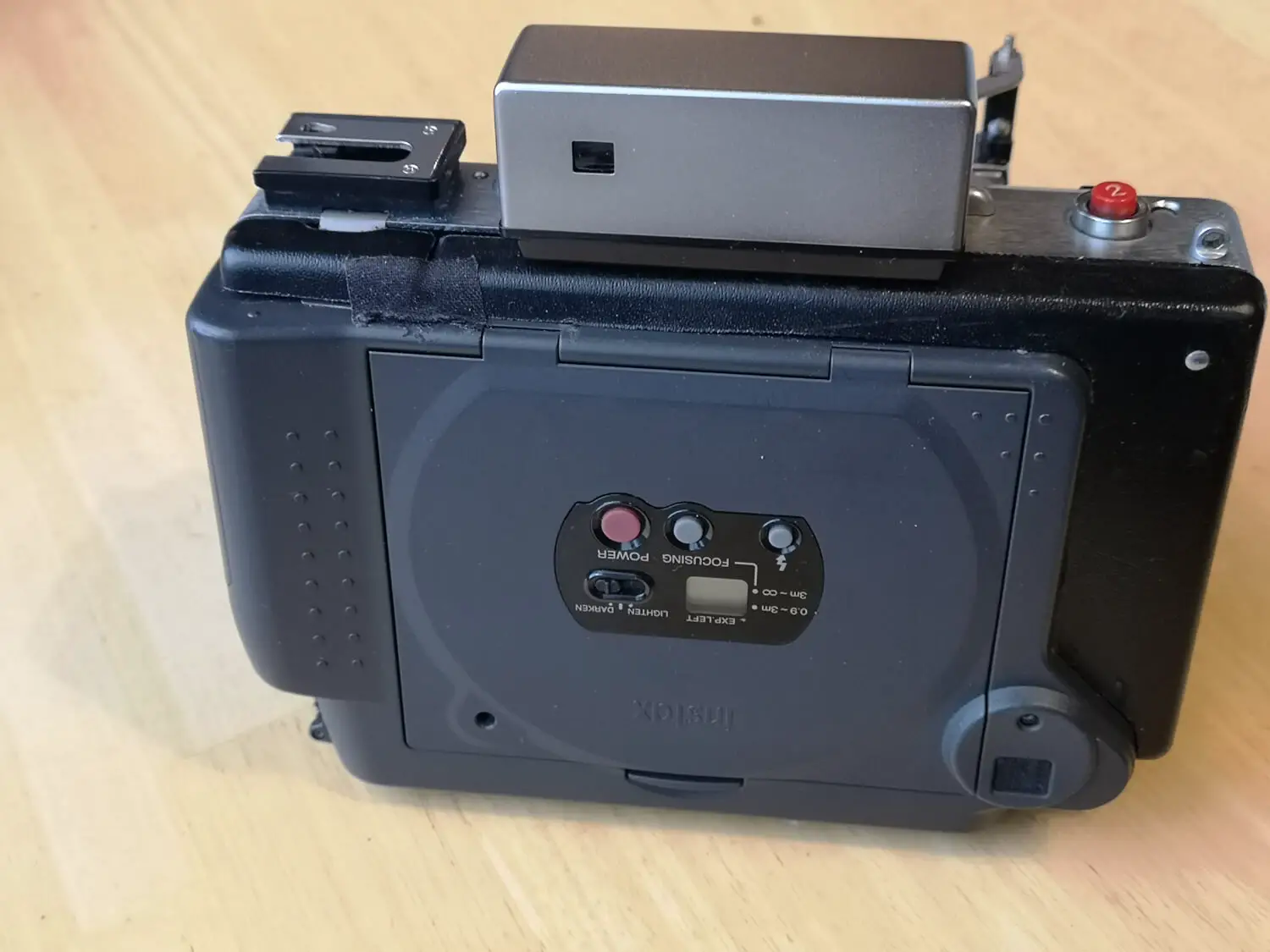
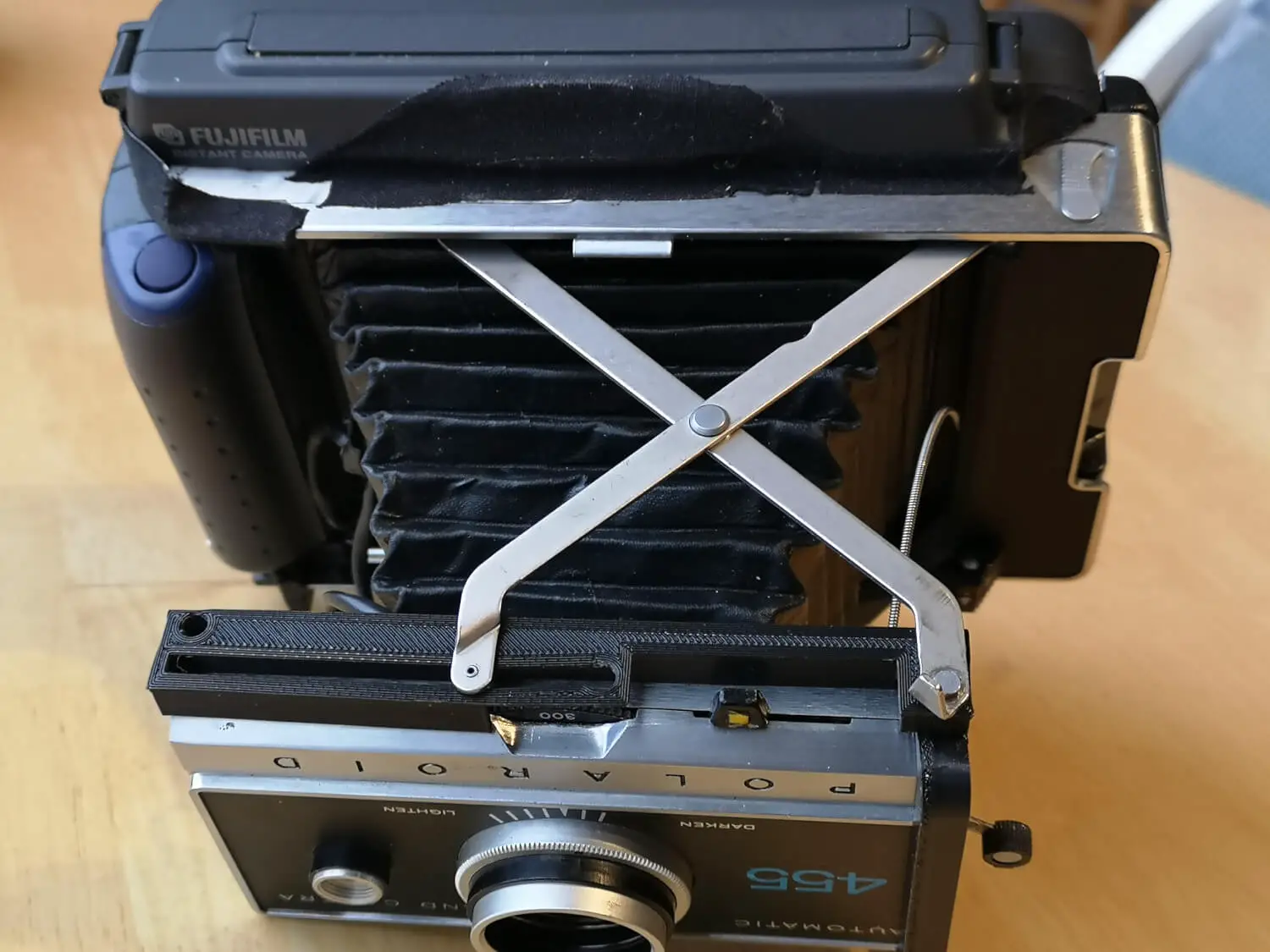
Right here’s what I cowl on this construct article:
Let the hacking start…
My first step was to search out the donor digicam, an Instax 100. It was Fujifilm’s first Instax Huge digicam and was initially launched in 1999. I remembered one had one way or the other landed in my stock a number of years again, so I dug it out and acquired a pack of Instax Huge movie.
Wiring the again to eject movie was pretty easy. The motor is reversible: when it runs in a single course, it powers a set of gears that opens/closes/focuses the lens meeting, and the opposite course ejects the movie.
The digicam labored wonderful and the photographs have been OK, however… nicely… I don’t need to be too vital, however that Instax broad 100 digicam will not be solely ugly, clumsy, and noisy, nevertheless it additionally doesn’t take the best of images with that 2-element plastic lens. I used to be questioning how Instax broad movie would do in a Polaroid pack digicam, and since I’ve a number of which have change into movie orphans, I made a decision it was price a attempt mating the 2 cameras collectively.
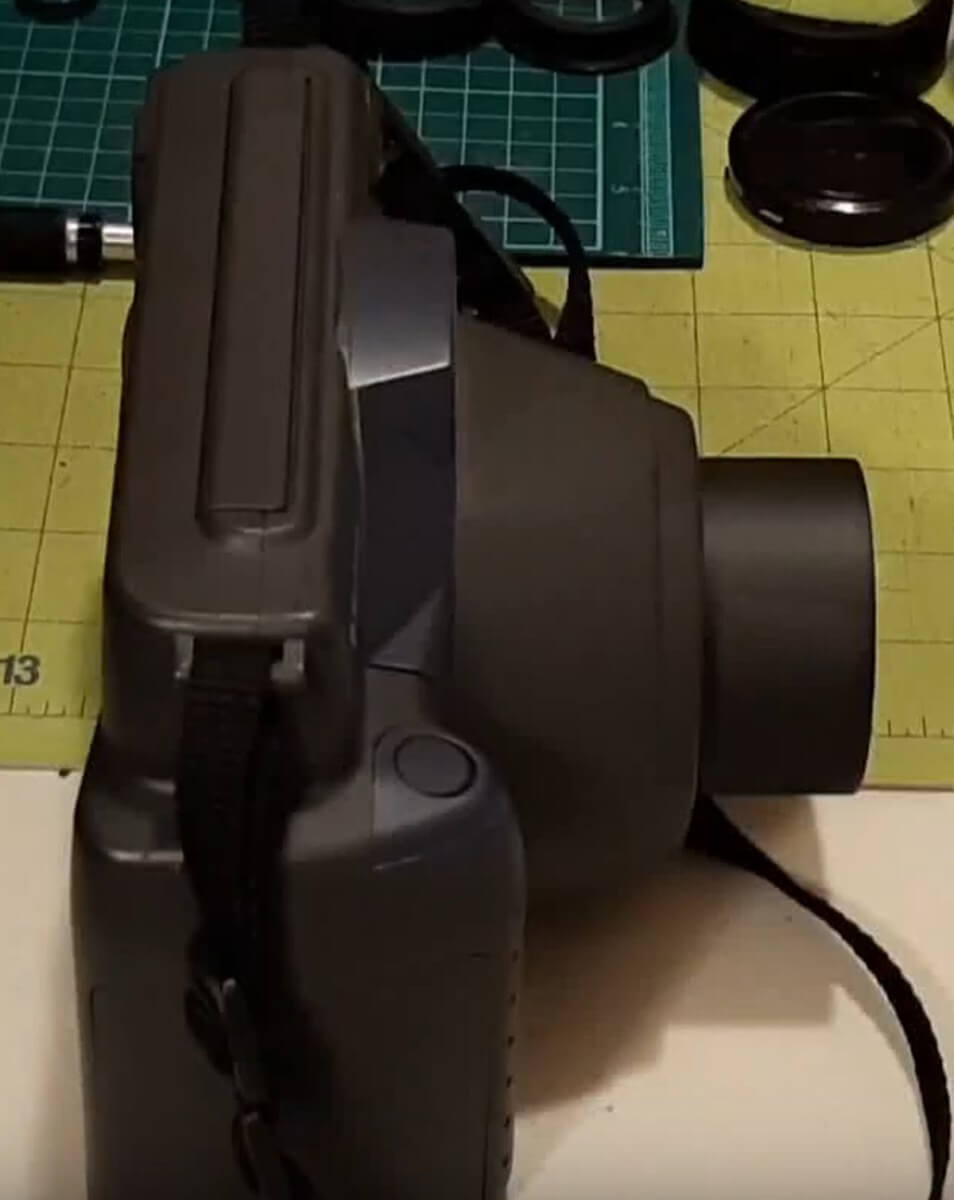

My subsequent step then, was to strip the Instax 100 digicam down to simply the movie dealing with mechanism..
Taking aside the digicam was largely a matter of eradicating screws, prying the case aside, and eradicating the entire electronics (cautious with the massive capacitor — it can provide you a shock!) However I used to be dismayed to search out that the lens barrel wanted to be reduce off, being molded to the again. This was one of many harder duties utilizing a hack noticed blade to chop it off flush with the movie airplane, conserving the movie ejection mechanism intact.
Wiring the again to eject movie was pretty easy. The motor is reversible: when it runs in a single course, it powers a set of gears that opens/closes/focuses the lens meeting, and the opposite course ejects the movie.
The important thing right here is to attach the detrimental battery terminal to the highest terminal of the motor (it has a inexperienced lead linked to it). The opposite motor terminal will get linked to the micro-switch situated close to the underside of the gear practice. The opposite terminal of the micro-switch is linked to the constructive battery terminal, finishing the circuit. The micro-switch turns off on the finish of the ejection cycle, turning off the motor earlier than it ejects one other photograph.
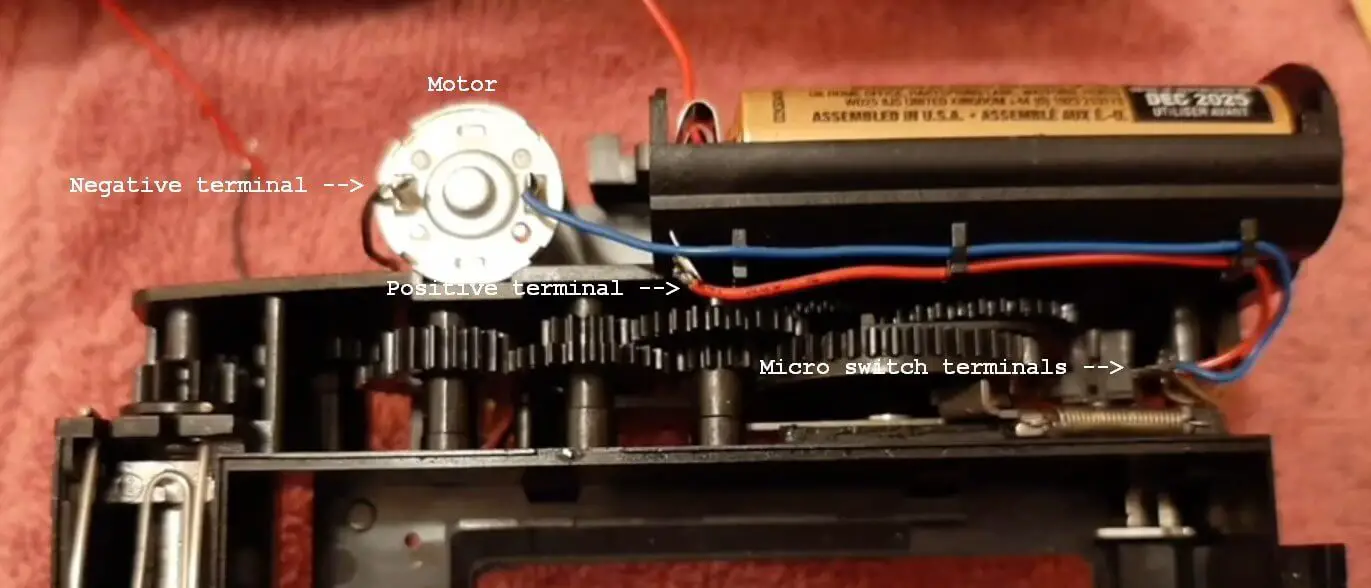
However I came upon earlier that motors run on after energy is eliminated, and although the micro-switch did flip off on the finish of the cycle, the motor ran on with its personal momentum, tripping the change once more, creating an infinite loop of ejecting movie.
I checked out what was taking place and decided the best solution to repair this was to elongate the time that the micro change was turned off. I discovered the cam that controls the micro-switch and doubled the size of the despair within the cam utilizing a knife and file.
Whereas hacking into the 455, I continuously tried becoming the Instax again, noting the place it wasn’t becoming, and hacking additional. It was brutal.
This turned off the change a bit of earlier, giving the motor time to cease. I remembered to make use of a recent set of batteries to make certain the cam was modified accurately. A extra elegant answer could be to make use of a relay to modify on the motor which might additionally quick it out when energy is eliminated, appearing as an engine brake, however that’s form of sophisticated.

I made a decision to make use of the present shutter launch on the Instax 100 to behave because the eject change.
The leads from the change connect with the micro change in parallel, so if you push the change, it closes the circuit and begins the motor. The micro-switch takes over and completes the ejection sequence after you raise your finger off of the eject change. The issue with utilizing the change is that the change floor is a chunk of graphite that presses in opposition to a circuit board.
Orienting the again to eject the movie up could be awkward as a result of the rangefinder is in the best way, so I selected to orient the Instax again the other way up.
The graphite gives sufficient present to shut an digital circuit, however not sufficient for a motor — until you press actually onerous. A chunk of aluminum foil or copper glued underneath the shutter launch button solves this drawback, creating a better amperage connection to begin the motor. A wire was soldered to the battery terminal on the Instax again which would supply 3 volts when linked to the detrimental battery lead, which was led out the entrance to provide energy to the Mannequin 455’s shutter.
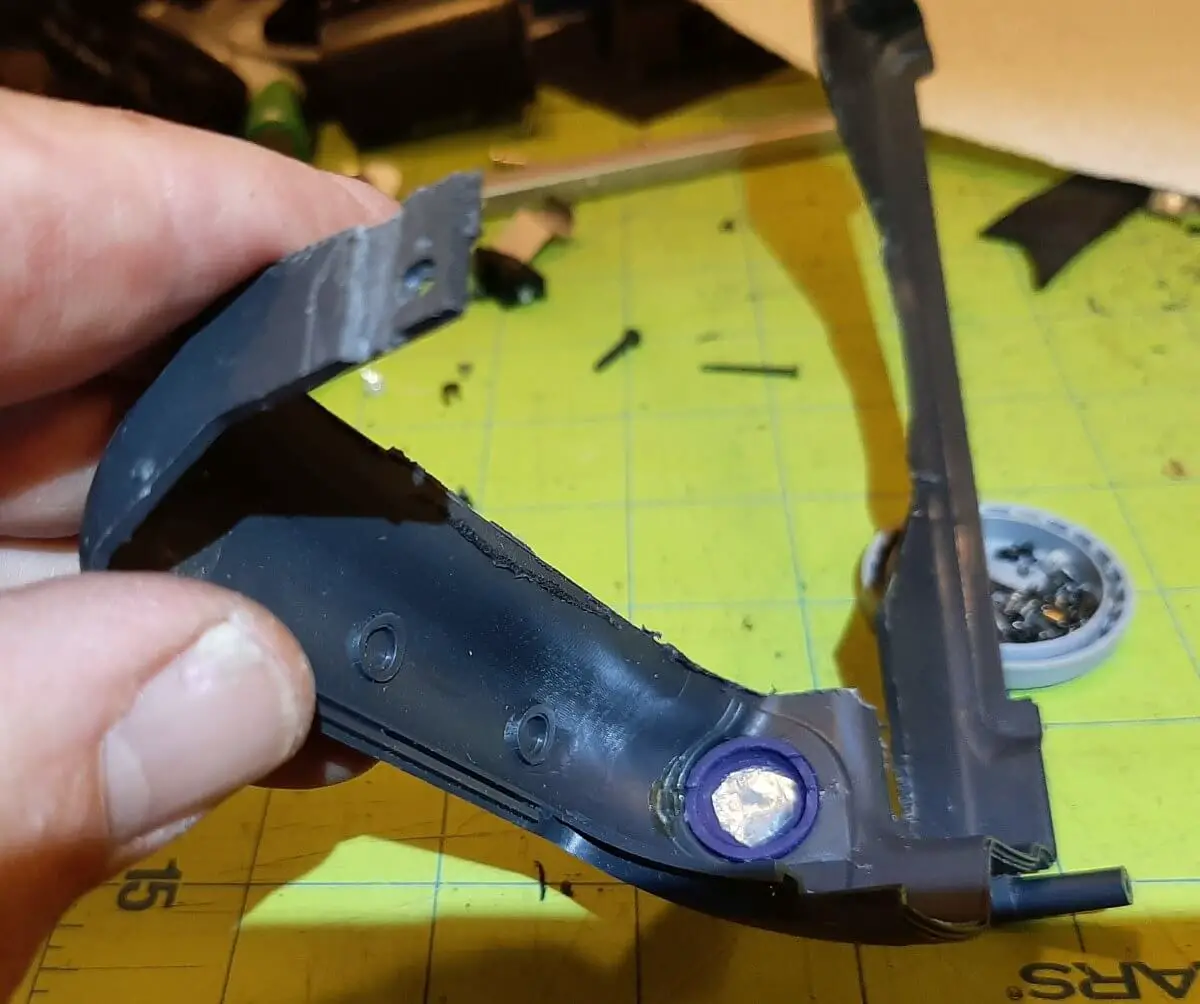
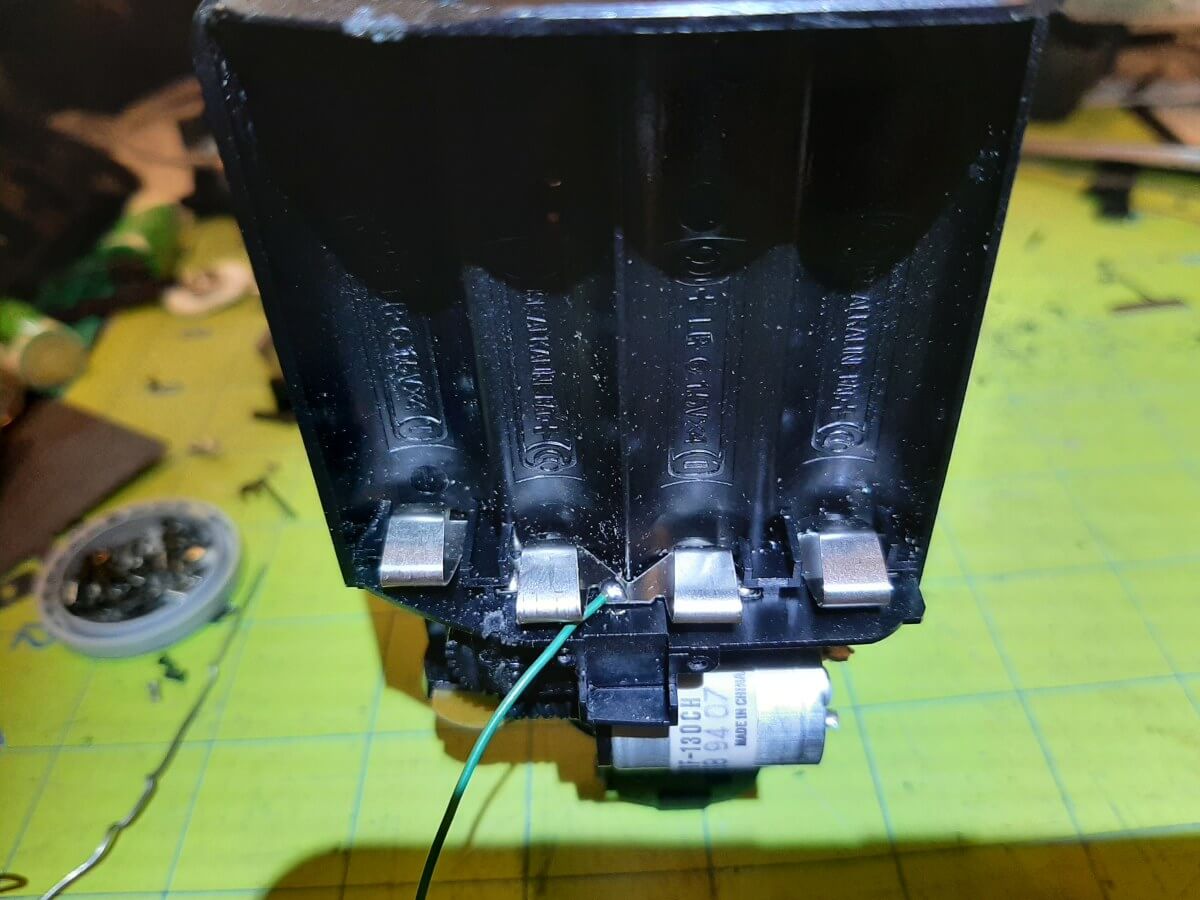
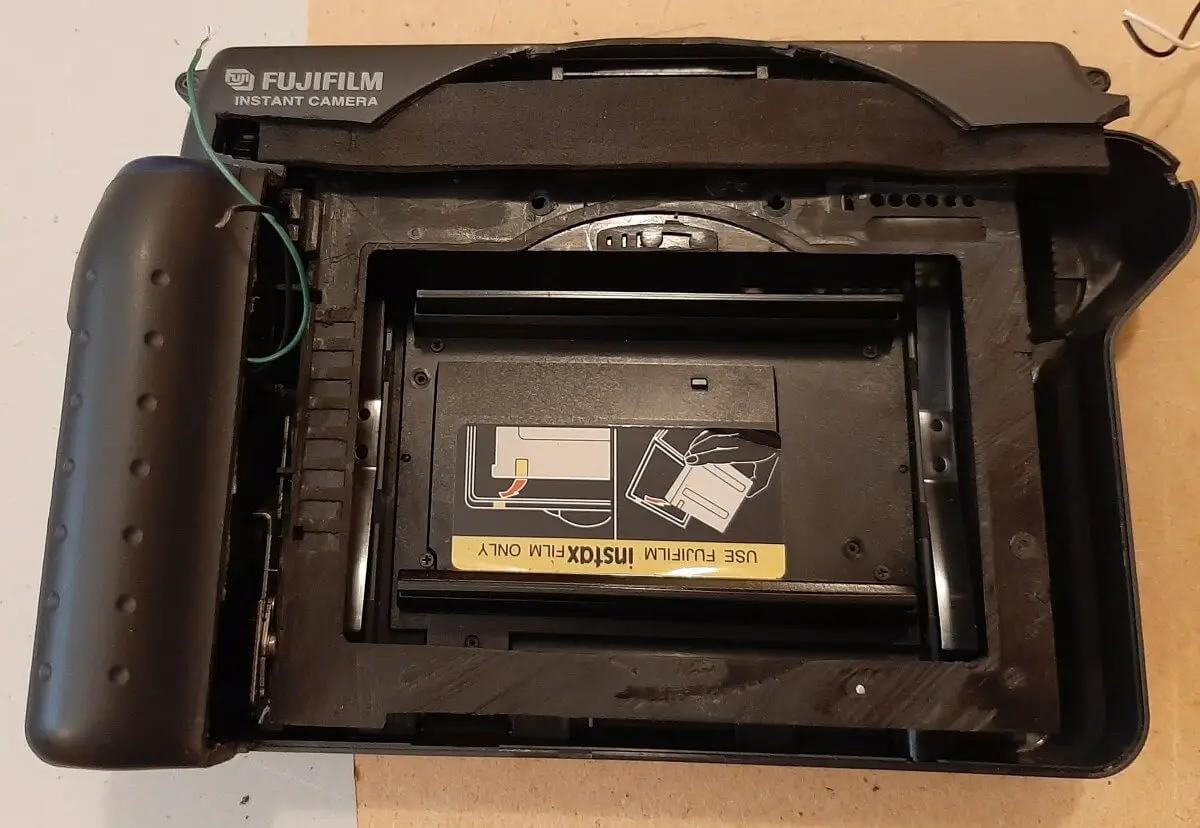
I came upon later, after buying an Instax Huge 210, that this mannequin is less complicated to make use of as a again: the lens physique isn’t connected to the again and is definitely eliminated (doesn’t should be hacked off), and the shutter button is a micro-switch so no aluminum foil is critical. The micro-switch additionally works in another way, dropping right into a slot on the timing gear, so the gear practice wants disassembly and the slot lengthened to forestall motor run on.
You is likely to be enthusiastic about…
Reducing up the Polaroid
Little did I do know the straightforward half was accomplished. After eradicating the again from the Mannequin 455’s physique and making an attempt to suit the Instax again instead as near the movie airplane as potential, I knew this is able to flip right into a severe hack job. Orienting the again to eject the movie up could be awkward as a result of the rangefinder is in the best way, so I selected to orient the Instax again the other way up.
I’ll at all times miss pack movie, however perhaps that is an OK comfort.
The grip on the Instax again protrudes loads and is pretty near the movie edge, so must be mounted near the sting of the movie airplane on the 455. The left aspect of the 455 must go, in addition to the underside ridges. Out got here the hacksaw and Dremel. I pried off the bellows and eliminated the lens physique earlier than hack sawing the 455, then used the Dremel to do some ending touches.

Whereas hacking into the 455, I continuously tried becoming the Instax again, noting the place it wasn’t becoming, and hacking additional. It was brutal.
In any case of this reducing/becoming, I managed to mount the Instax again with solely a 6 mm rear offset from the unique movie airplane, which I came upon later was awkward to offset on the lens physique.

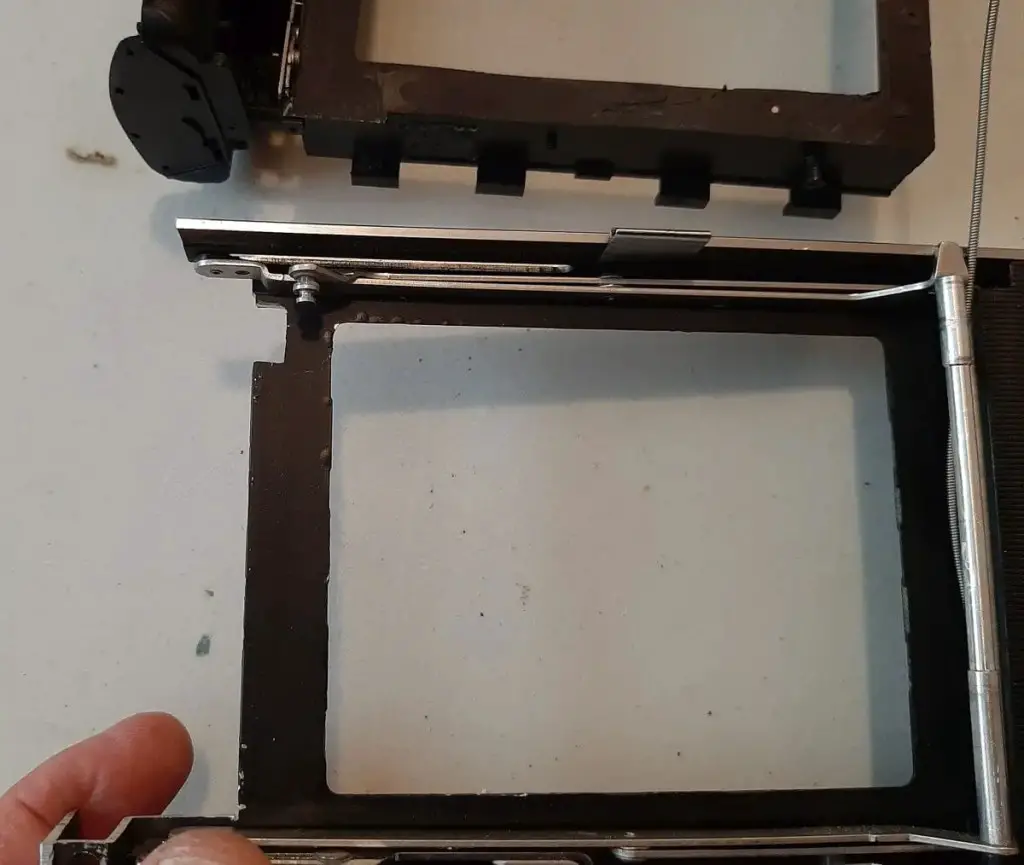

However the soiled work was largely accomplished and the Instax again ended up mounting barely to the left backside nook of the Polaroid movie space. A layer of 10 mm black closed cell craft foam was reduce to measurement to suit the movie space contained in the Polaroid and the Instax broad again when mounted. A further piece of froth was reduce to measurement to seal the rollers space within the Instax again. The Instax case was additionally reduce rigorously to suit snugly in opposition to the Polaroid.
See what I imply by “a severe hack job?”


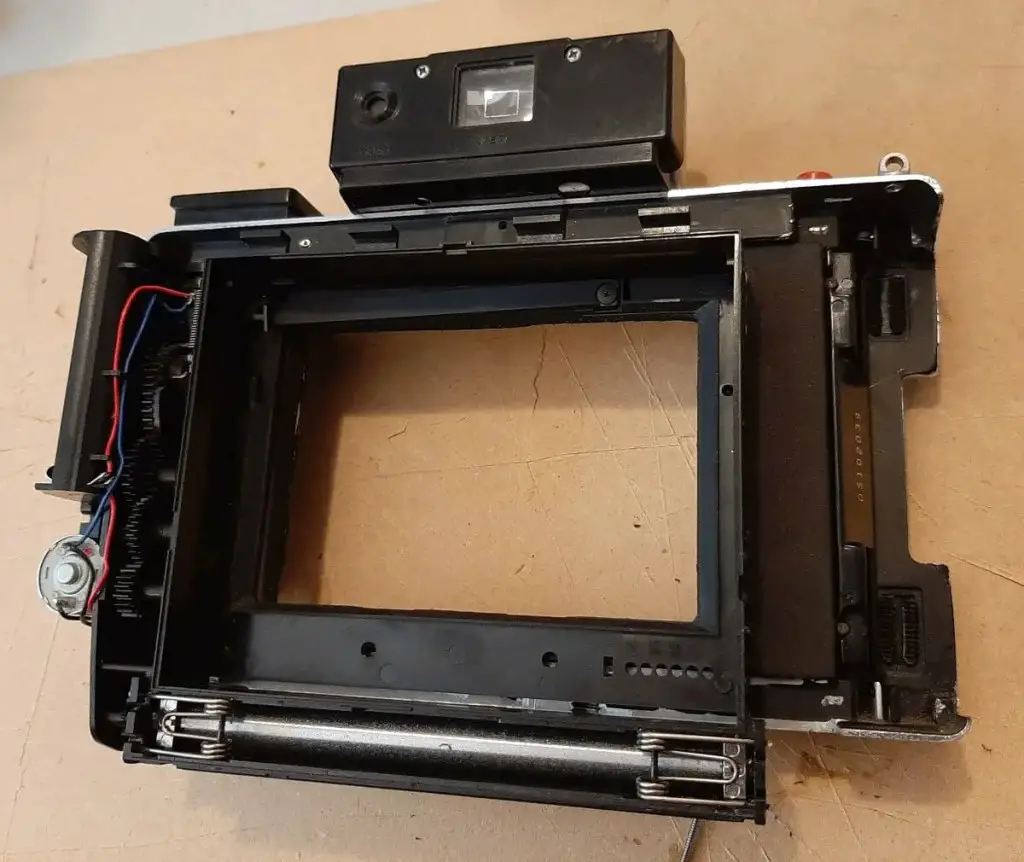
Placing all of it collectively
Mounting the again was a matter of reducing straps from a tuna can and attaching them to the digicam with the small screws saved from the Instax 100 disassembly. I mounted the again by pre-drilling the holes within the straps, then pre-drilling smaller holes for the screws within the again whereas urgent down on the again to create a lightweight seal. Three straps have been used on the precise aspect, high left, and backside left.
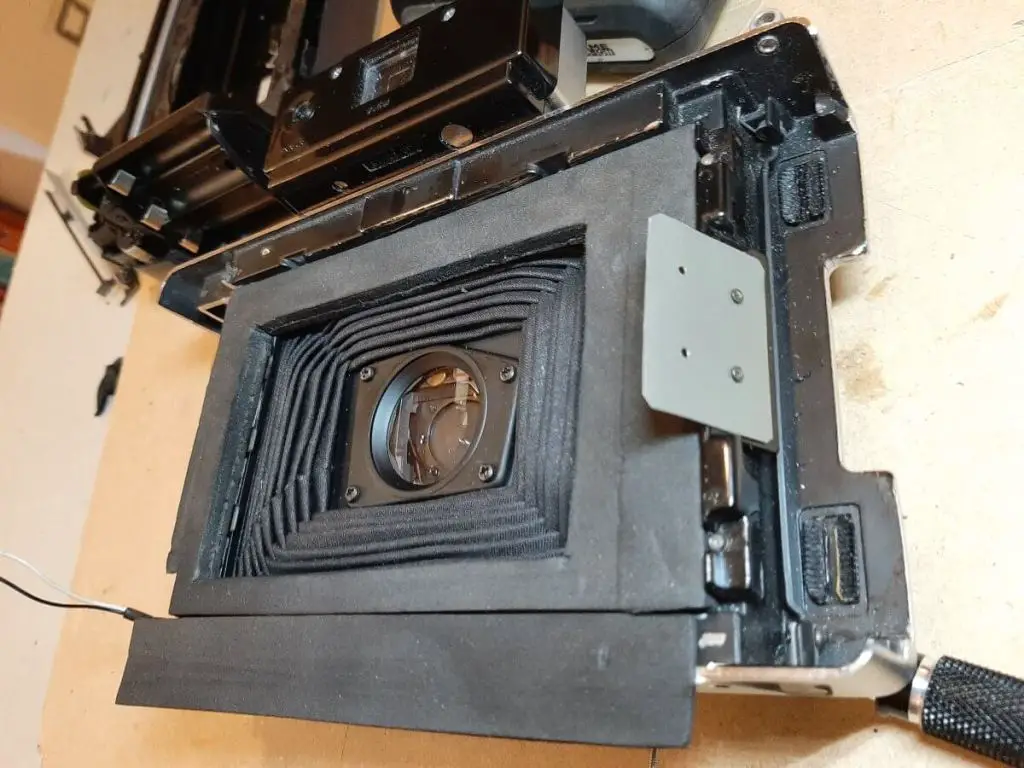
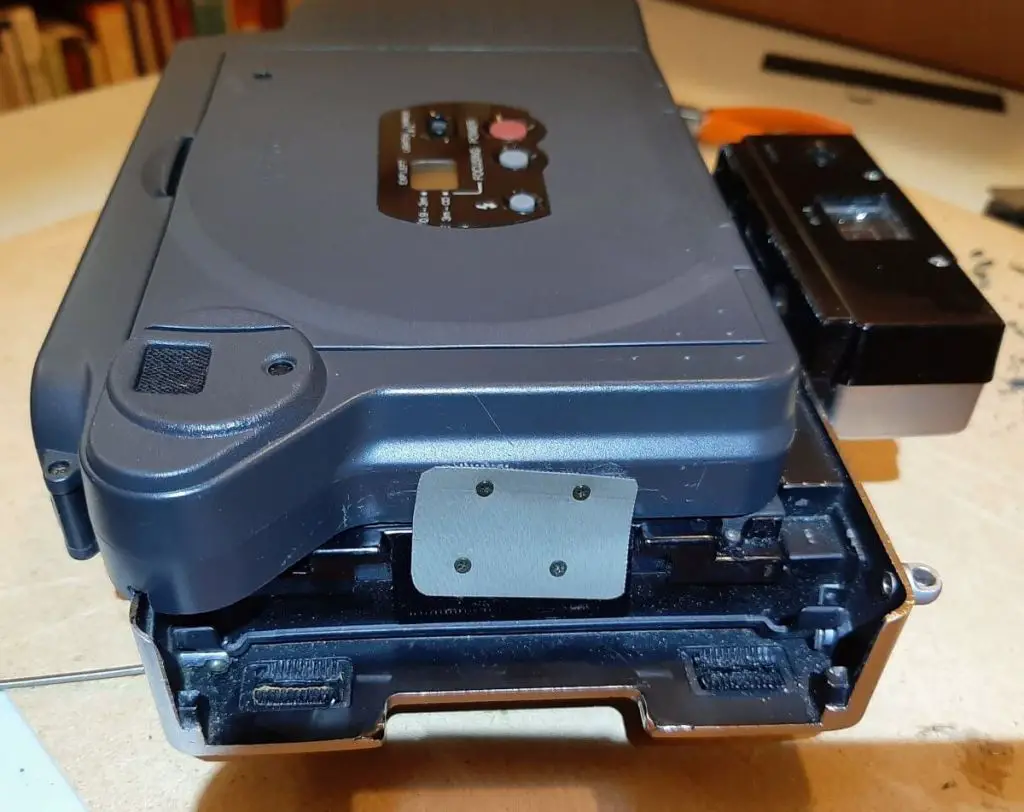
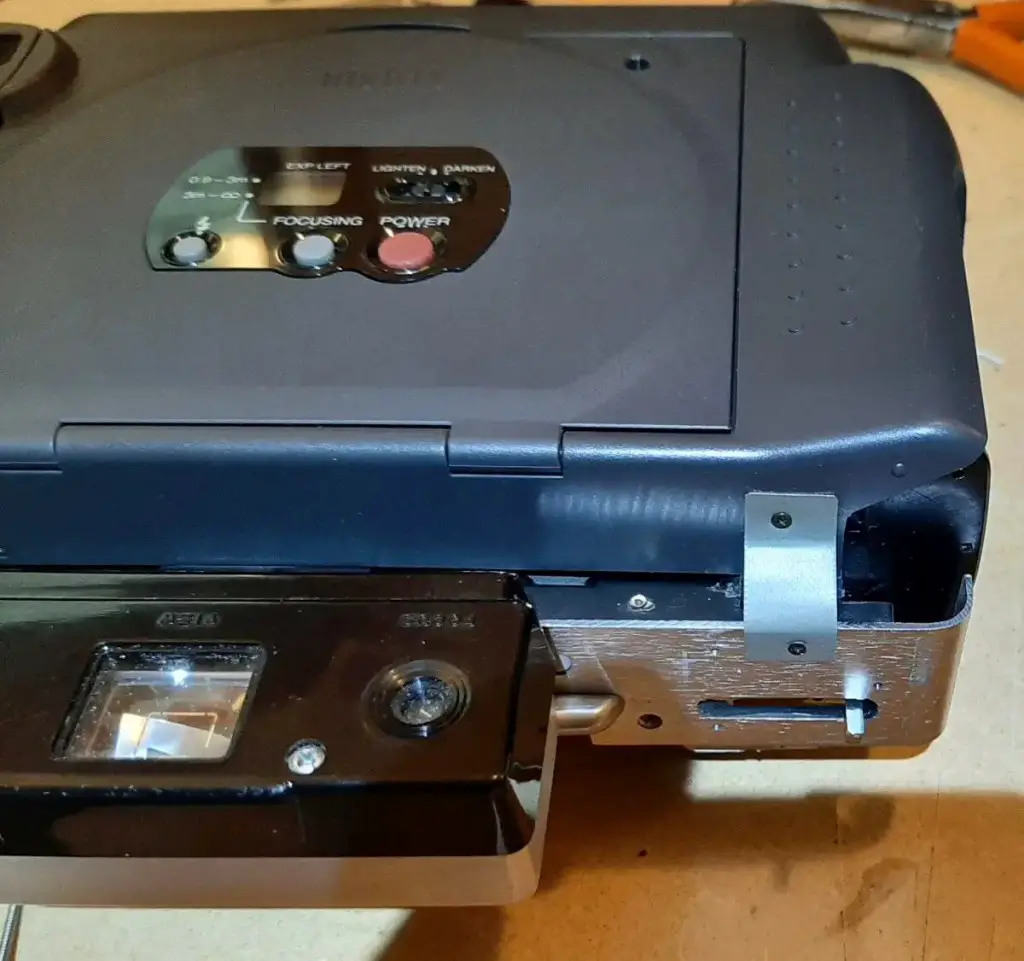

The leads out of the again which offered the three volts for the digicam have been soldered to the shutter leads on the lens physique (beneath, high left). The previous again from the 455 was trimmed to suit the contour of the Instax again, with an extra piece from the battery door reduce to finish the trim. Across the entrance of the digicam, the precise focus knob ( it from the entrance) was eliminated and put in the other way up so it wouldn’t intervene with the Instax grip, and a small piece of trim was glued into place underneath the main focus knob.
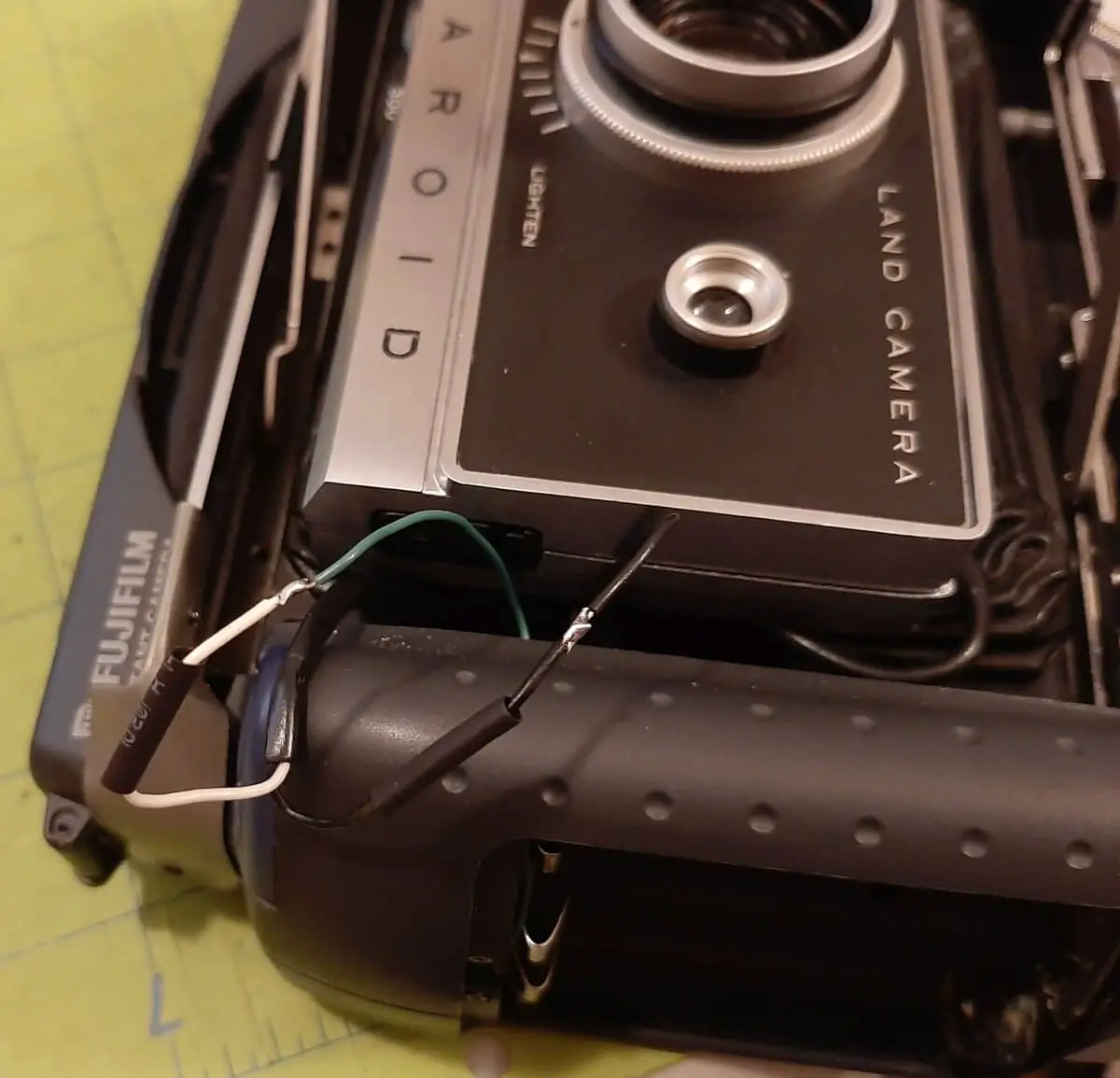
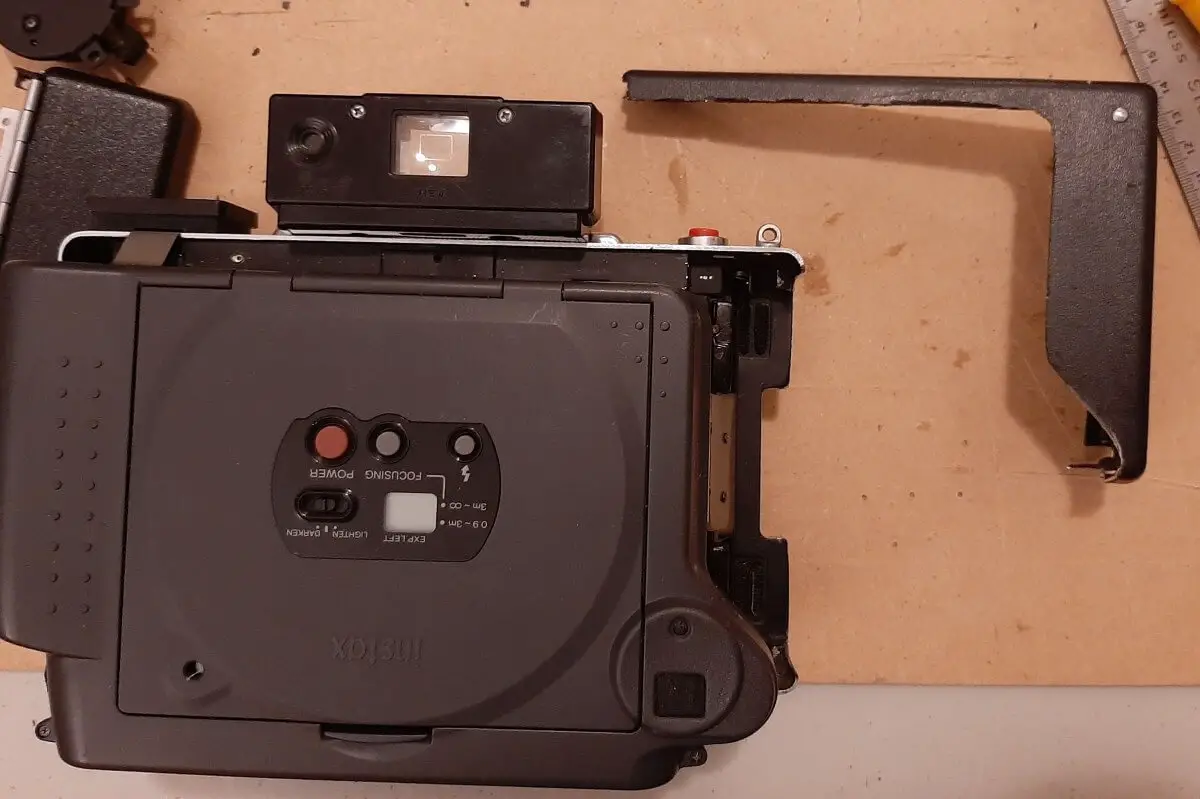
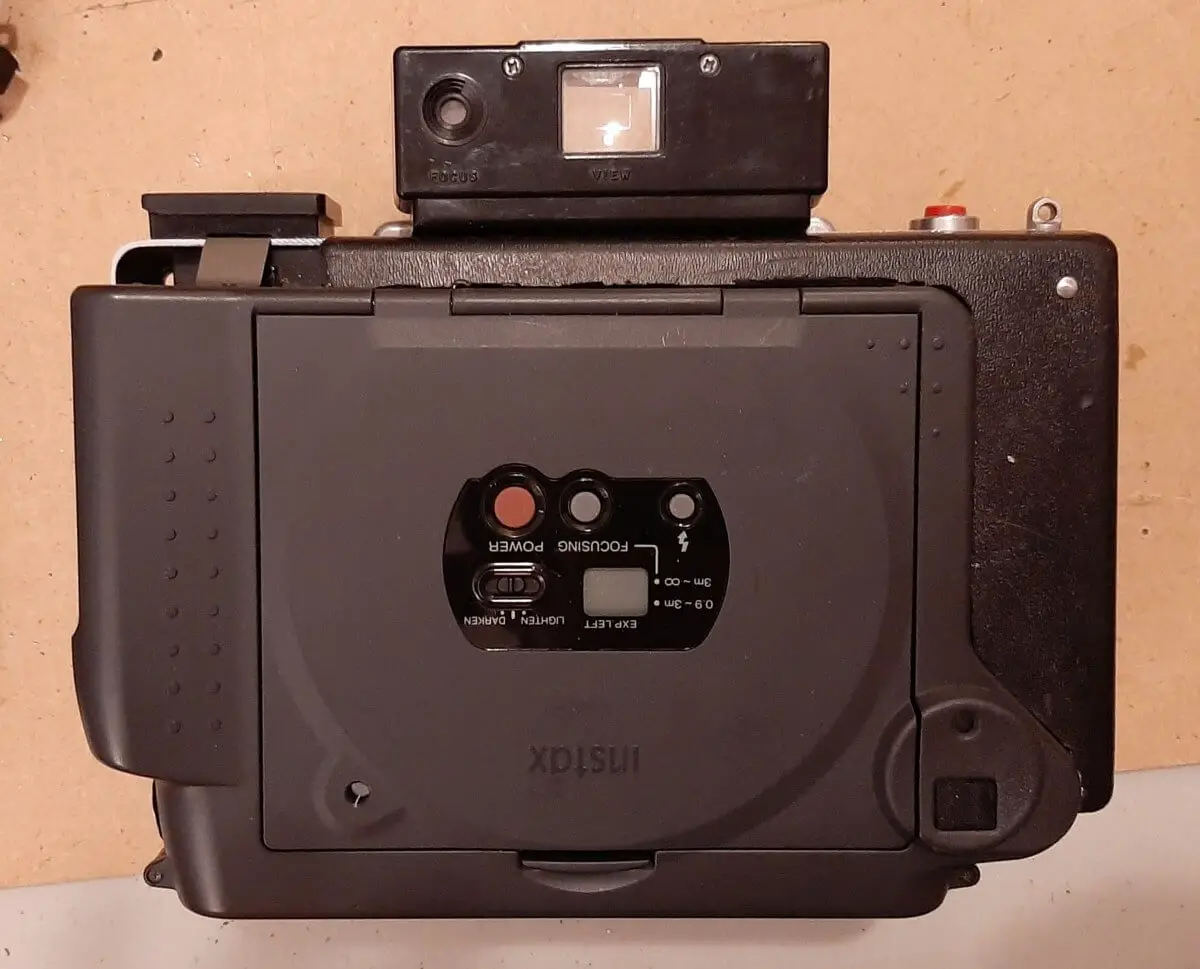

The final step was transferring the lens physique again round 6 mm. That is an ungainly quantity, because the minimal distance the lens physique will be moved straight again is 18mm, and something lower than 11m will trigger the underside horizontal strut to intervene with the aperture/velocity settings. So I made a decision to attempt transferring it again and to the aspect 11mm utilizing spacers and a 3/16″ rod.
Though I managed to do that, there are two issues with this: the bellows don’t fold down completely, creating kinks, and it’s tough to vary the aperture settings because the horizontal strut is so near the aperture dial and lever.

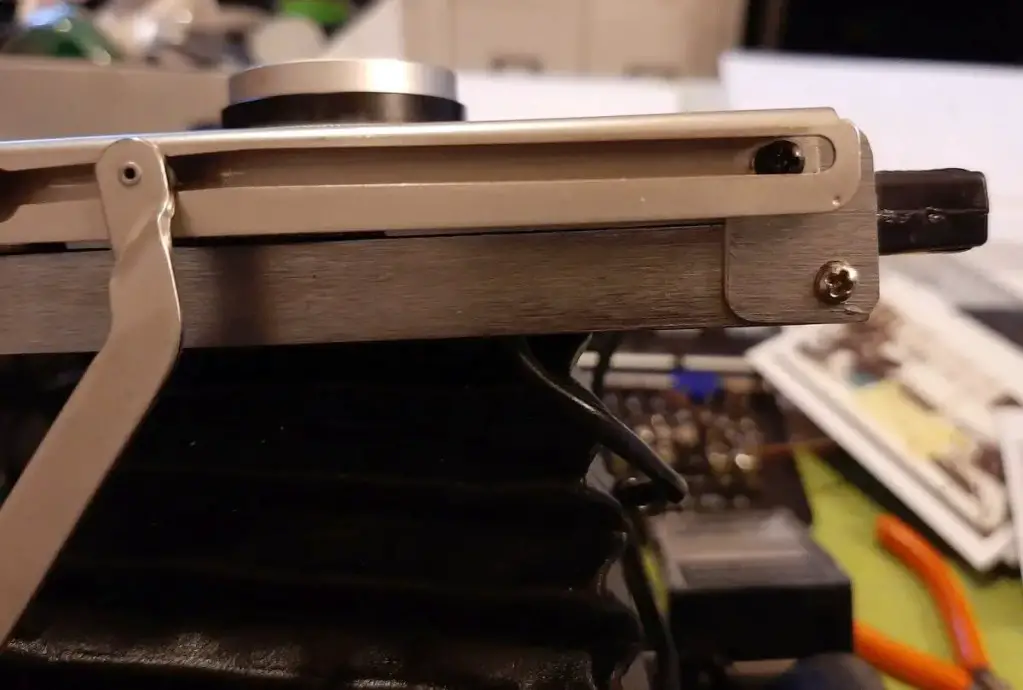
I checked focus in opposition to the rangefinder by getting an previous Instax broad movie pack and reducing the again out and taping a chunk of acetate sheet which had been sand papered with 600 grit. With tape over the electrical eye, and the aperture set to f/8.8, I centered on an object, then opened the movie door, inserted the movie pack with the “floor glass” and checked focus whereas urgent down on the shutter launch. I discovered I needed to regulate the rangefinder fairly a bit because the lens physique was 5mm too far again. Some shut focusing vary could be misplaced…
I took one other have a look at this drawback not too long ago, armed with a 3D printer, and got here up with a 3d printed answer. I designed a horizontal strut which provides ample clearance to the aperture/velocity settings, then made a vertical strut which might offset the lens physique the right 6mm. As soon as I put in them, infinity focus labored, the bellows isn’t kinked anymore, and I can safely take pics at f/8.8.
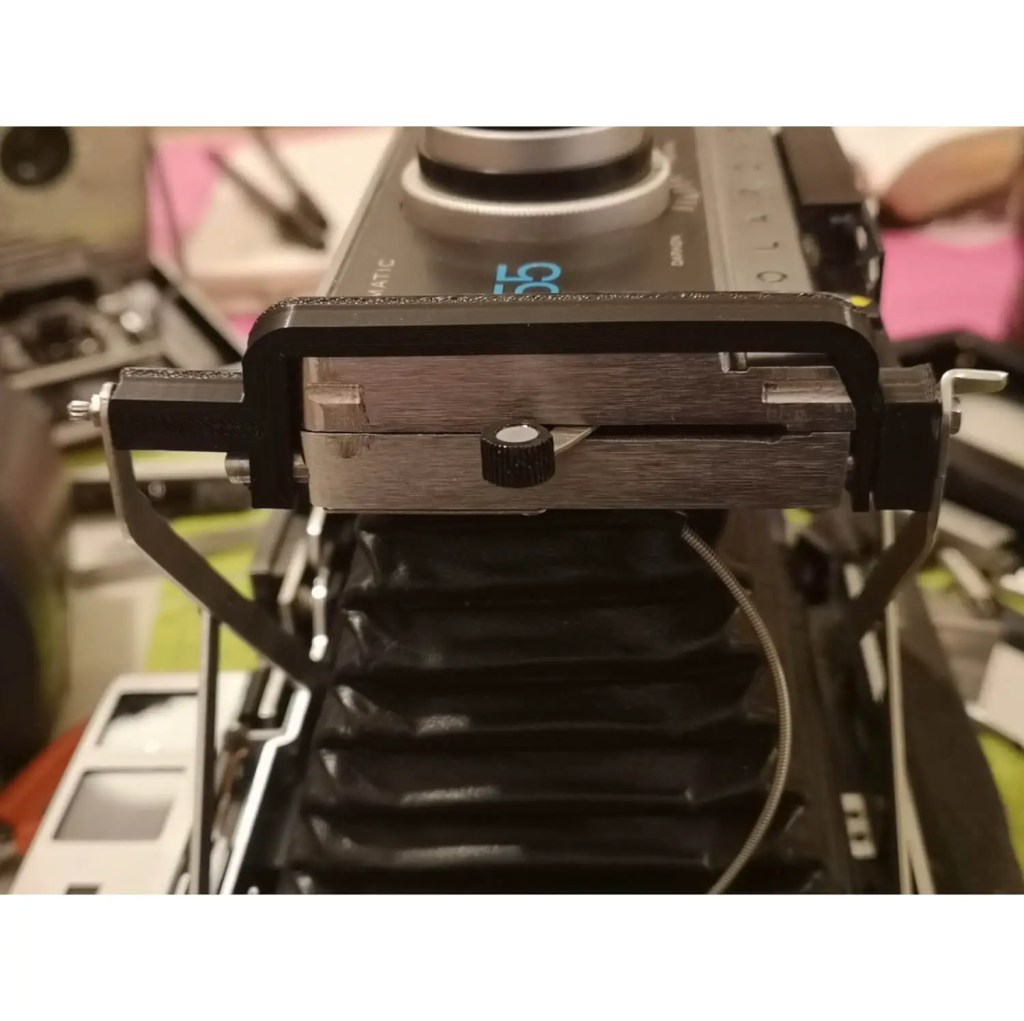
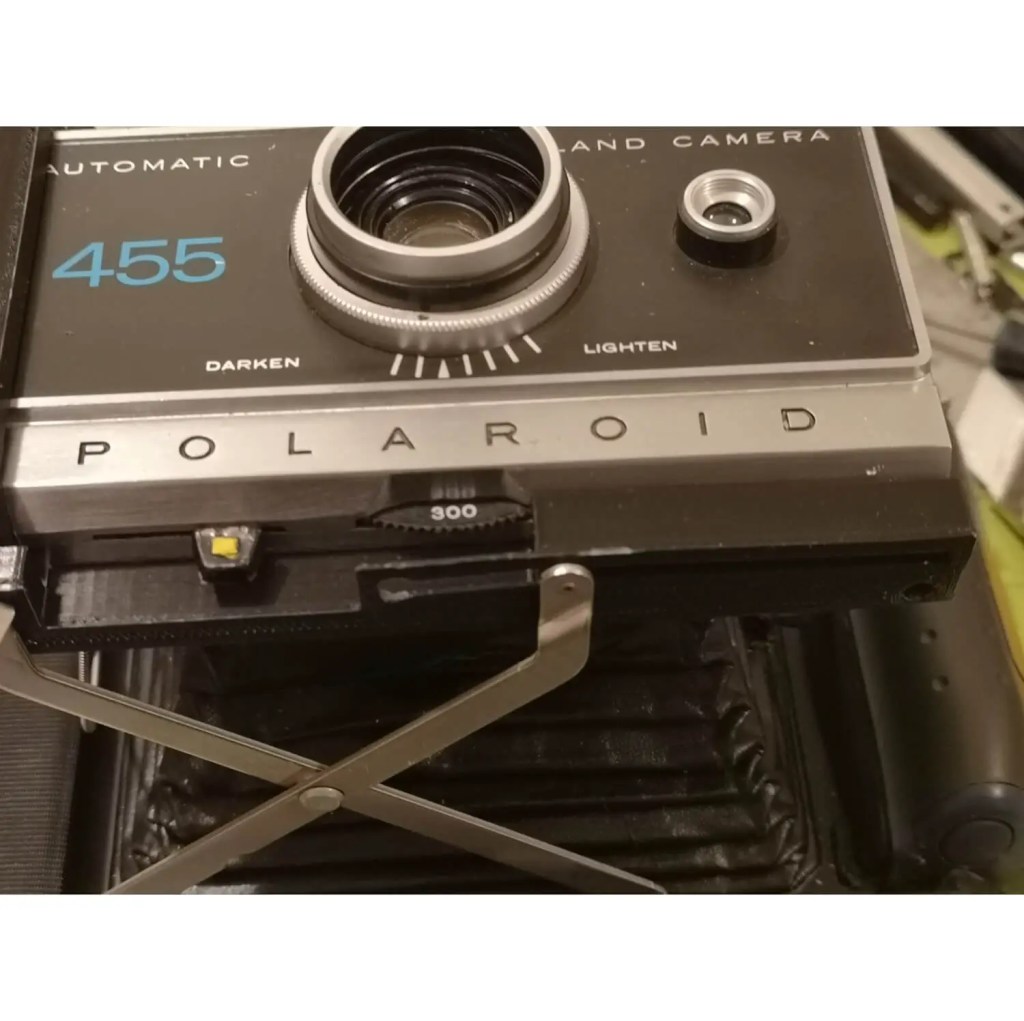
The second of reality…
Now to check. I set the ASA dial to 300 and moved the lens setting one mark to darken. These cameras usually underexpose round 1 cease, in all probability as a result of the electrical eye is producing much less resistance than when new, so though Instax movie is rated ISO 800, setting the Polaroid to round 400 ASA would find yourself working nicely. I used to be impressed with the standard of photographs this digicam — which I name the Pola-Instax 455 — produces.
I discovered it a bit difficult working with Instax Huge movie, because the dynamic vary is kind of slender. However photographs indoors with flash dice, and topics with even lighting open air work nicely.
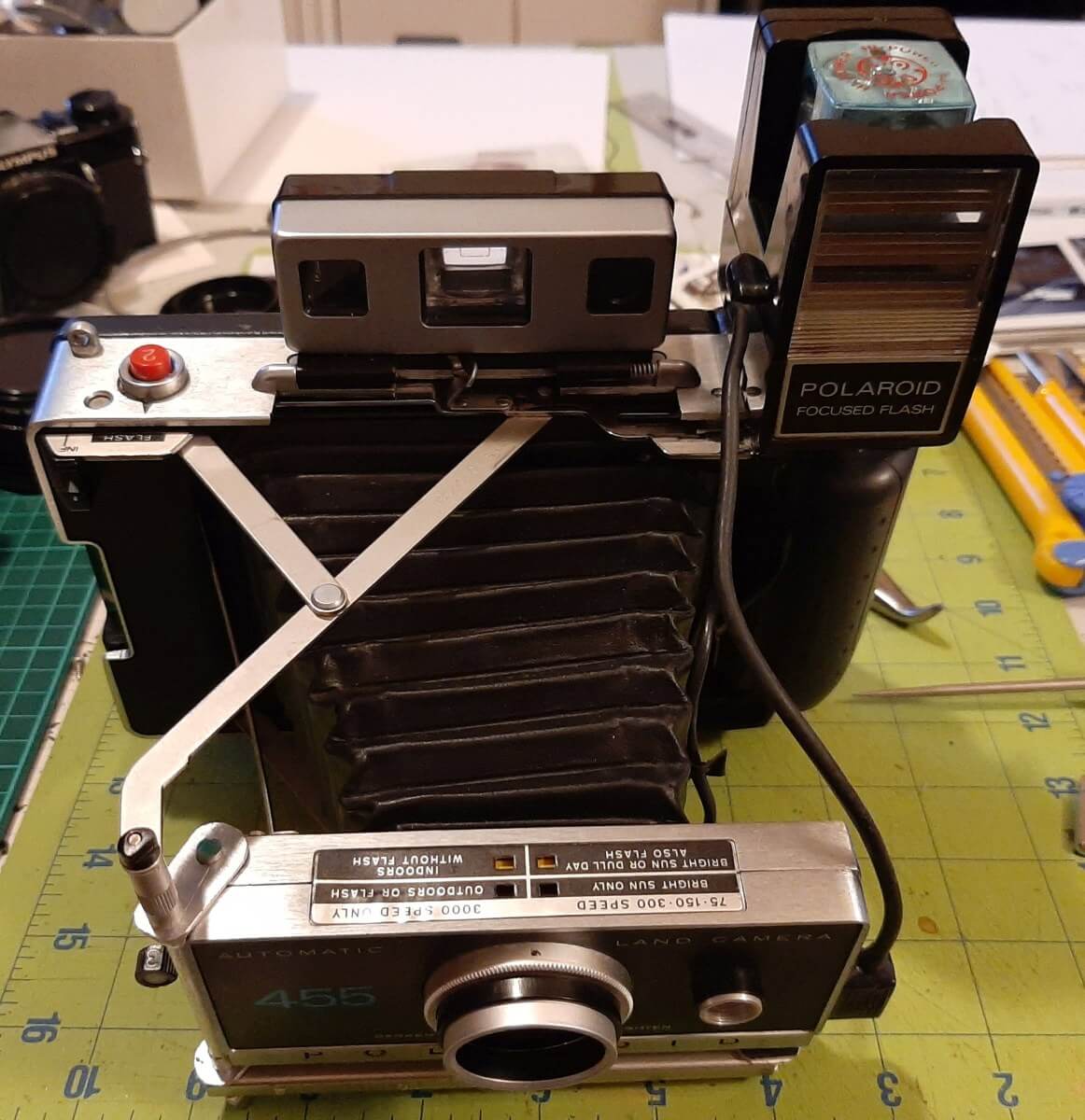


So now, as an alternative of getting to make use of an unsightly, clumsy, noisy, mediocre high quality Instax 100 digicam, I get to make use of a deluxe stylish Polaroid pack movie digicam with a high-quality 3 aspect glass lens to take Instax photographs. It’s at all times enjoyable unfolding the bellows, attaching any equipment just like the portrait/closeup attachments or the flash, then focusing with the rangefinder, cocking the shutter, framing the photograph and taking the image.
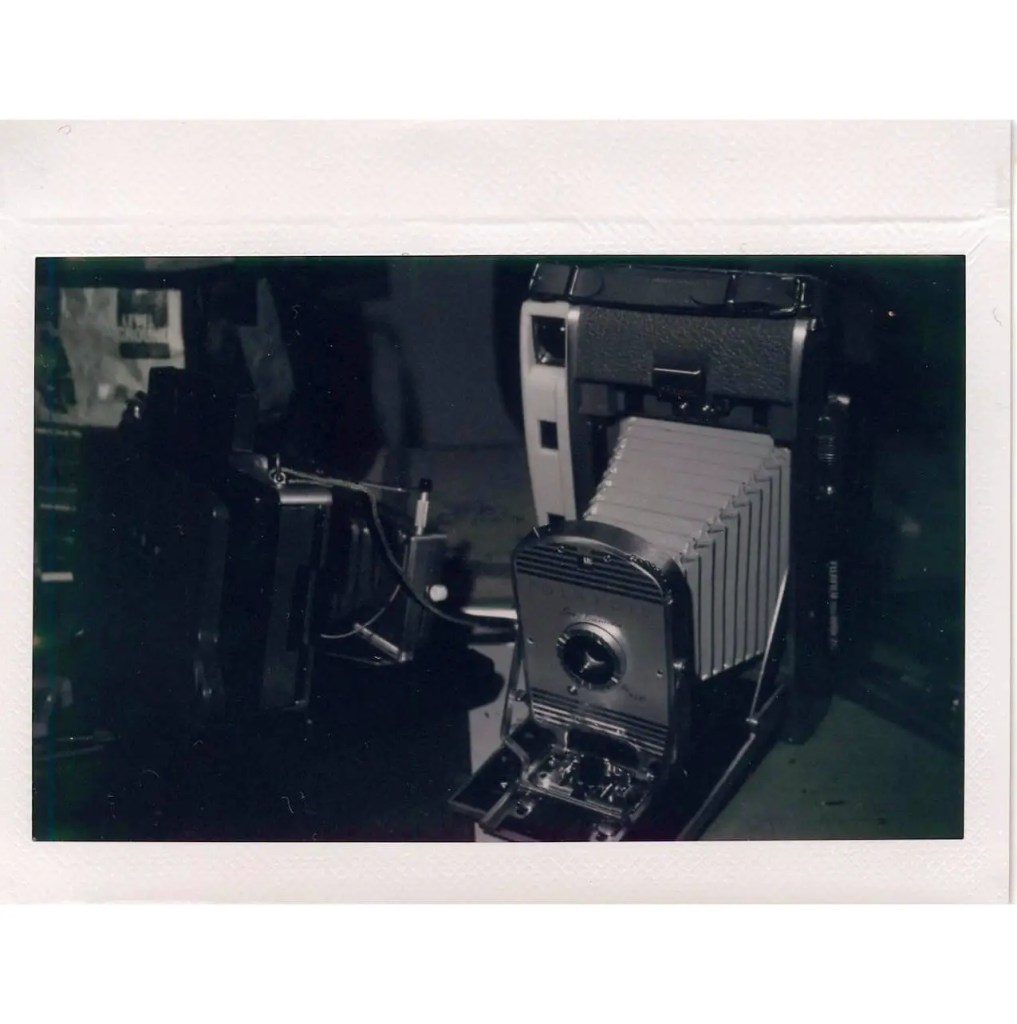


It’s not fully magical because you don’t get to peel aside the moment photograph, however perhaps it’s the following smartest thing: footage in about 3 minutes with the plastic shiny envelope the place you may see it develop. I’ll at all times miss pack movie, however perhaps that is an OK comfort.
~ Jim
Share your data, story or mission
The switch of data throughout the movie pictures group is the center of EMULSIVE. You may add your assist by contributing your ideas, work, experiences and concepts to encourage the a whole lot of hundreds of people that learn these pages every month. Check out the submission guide here.
For those who like what you are studying you can too assist this ardour mission by heading over to the EMULSIVE Patreon page and contributing as little as a greenback a month. There’s additionally print and apparel over at Society 6, at present showcasing over two dozen t-shirt designs and over a dozen distinctive pictures accessible for buy.